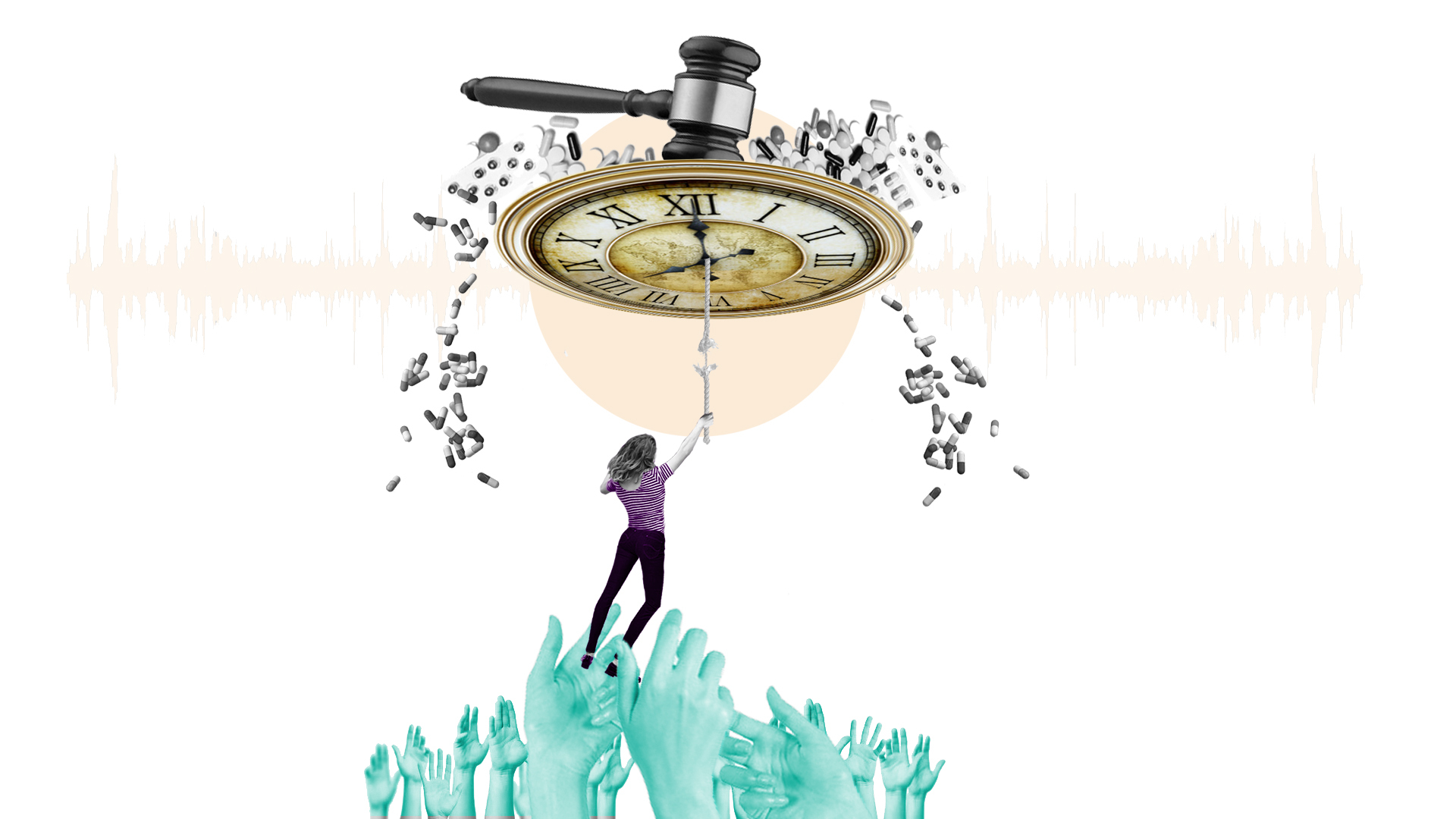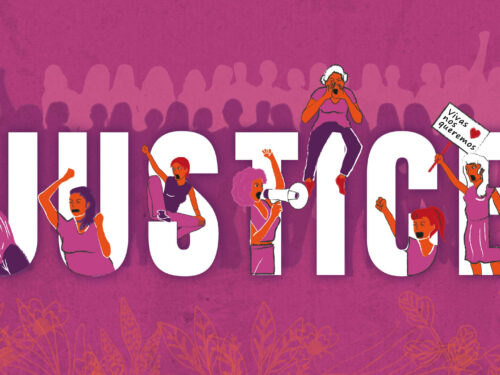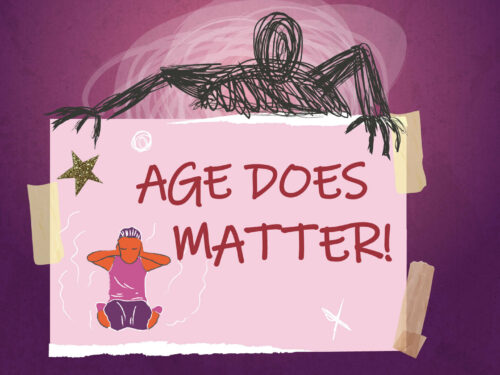
Eva woke up in her bed uncertain of what had happened the night before. She knew that she had been drinking with friends and acquaintances in her apartment. She also remembered when she decided to go to sleep because she felt that she had lost control of her body due to the alcohol.
Afterward, she remembered hazy fragments of memories. She remembered putting on pajamas. One of her acquaintances entering her room. That acquaintance on top of her.
“I let him know that I was very drunk,” she recalled. But it took her at least a week to figure out that she never consented to having sex. It was rape. At that time, she decided to go to the EBAIS clinic to be examined for sexually transmitted infections (STIs).
Like her, the vast majority of women don’t seek immediate medical attention after being raped. That isn’t surprising. They feel guilty about what happened, afraid of what they’ll have to face and are unaware that the 72 hours after the rape are key to caring for their health and being able to prosecute the rapist.
In 2011, the Costa Rican Social Security Fund (CCSS) and the Judiciary published the “72-hour protocol” as a commitment to guarantee prompt and comprehensive care for rape victims. It’s a joining of forces between healthcare and prosecution that doesn’t happen in many countries in the region.
According to the protocol, hospitals can prescribe medications to prevent pregnancy, STIs and the human immunodeficiency virus acquired (HIV). They can also address the mental health of victims and allow judicial authorities to collect evidence at the crime scene and on their bodies to prosecute the attackers.
Between 2018 and 2020, hospitals in Guanacaste treated 135 women who reported rape within a 72-hour period after the attack. All of them received antiretroviral treatment to prevent HIV.
That is practically one woman per week seen during 2018 and 2019. The number dropped in 2020 during the pandemic. Eva was unaware of this protocol until she searched the internet for information after she was sexually assaulted earlier this year.
Tatiana Castellon, a psychologist with the National Women’s Institute (INAMU for the Spanish acronym), explained that not knowing about the protocol is one of the factors that hinders it from being more successful in helping the victim.
Sexual violence has been so naturalized,” she emphasized. “There’s also the fear that women feel. The victim arrives and bathes, and with that, a lot of evidence has been lost,” she added.
Some recommendations for abused people are not to bathe, change clothes, wash their body or brush their teeth. It’s preferable that they don’t urinate or defecate either.
One of the protocol’s goals is to minimize revictimization. That’s why it allows judicial and health officials to collect samples in the same hospital where patients receive medical care, in order for them to go through those exams and questions the least amount of times possible.
“[The idea is that] when this person goes to health services, especially for emergencies, they aren’t handled two or three times, or aren’t examined four times, because they are people who have a lot of psychological and emotional impact and basically, if you go to touch them, you make that impact stronger,” explained Dr. Gloria Terwes, coordinator of the protocol for CCSS.
To achieve this more successfully, Terwes recognizes the need for those who care for victims to guarantee places of confidentiality, which doesn’t happen in all medical centers. “We’re asking that if the person goes there due to rape, if there is an outpatient consultation room that isn’t being used, that she can be attended there by the Judiciary and CCSS.”
360 Degree Care
Although the protocol is mainly promoted by the CCSS and the Judiciary, other institutions are also involved, including the National Children’s Trust (PANI for the Spanish acronym), the National Women’s Institute (INAMU), the Ministry of Security, the Judicial Investigation Agency (OIJ), firefighters, 9-1-1 and the Ministry of Health.
We saw an urgent need to define parameters to get the majority of rape victims and provide them with all the services they require in accessing justice and health,” said the head of the Judiciary’s Technical Gender Secretariat, Jeannette Arias, who participated in creating the project at that time.
Today, 10 years after the protocol was put in place, there are 18 Rapid Response Teams (ERRs for the Spanish acronym) across the country. These groups are responsible for implementing the protocol. They are made up of officials from the CCSS and the Judiciary, who have connections to institutions such as INAMU and PANI at the same time.
The ERRs are located mainly in those communities where it’s possible to have the necessary medications and personnel to provide care to victims, for example, from hospitals with antiretrovirals for HIV to Judiciary branch offices with forensic doctors.
In Guanacaste, the Enrique Baltodano hospital in Liberia and La Anexion hospital in Nicoya are part of the agreement, as well as the judicial circuits of Nicoya, Liberia, Cañas and Santa Cruz.
Each team has a WhatsApp group, Arias said.
“There on WhatsApp, you see how the protocol is activated. It says ‘the protocol is activated, victim of legal age, transported by OIJ.’” The teams are obligated to transfer the victim from the house to the public prosecutor’s office, to the forensic expert or to the hospital and then back home,” she explained. “That didn’t exist before.”
Although there are only 18 ERRs, the protocol must be applied throughout the country. For example, if a victim goes to an EBAIS clinic in La Cruz, the institutions likewise activate the protocol to transfer her to the Liberia hospital, the closest one to guarantee prompt physical and mental health care and judicial follow-up.
Is it mandatory for the victim to file a report when she receives care through the protocol? Not really.
“There are women or men who go to health services and don’t want to report it, but that has nothing to do with the care. They will be given all the same care because health handles it for health purposes and justice for prosecution,” explained Dr. Gloria Terwes, from CCSS.
However, personnel from the institutions involved invite the victim to do so.
If they don’t report it, it’s a crime that can’t be solved,” commented Terwes. “The more reports there are, there will be more of a guarantee of decreasing the perpetrators or educating more perpetrators. That is what is gained.”
It’s not easy at all. Eva, for example, said that she’s afraid of the revictimizing process that she might have to go through if she legally accused her aggressor.
Institutions still have challenges to validate the information they collect on the protocol’s success. There’s a slight difference in data from the Judicial Power and from CCSS precisely because the Judicial Power records the people who actually file a report, while CCSS’s data that most closely helps understand the protocol is the number of people who are prescribed antiretrovirals after rape.
For example, while CCSS documented 614 women cared for in 2019 throughout the country, the Judicial Power registered 437. Possibly those who filed reports.
That’s why both Terwes and Arias recognize that the institutions must improve data collection about these events. How many people were cared for? How many rejected medications? How many went through the process for prosecution? These are some of the pending questions.
It’s Not Enough
According to the Judiciary’s gender coordinator, the protocol has reduced the time it takes to care for rape survivors.
“A victim that is cared for in five hours in Guanacaste possibly feels like an eternity,” Arias said as an example. “But before the protocol, that victim had to be transferred to San Joaquin de Flores, in Heredia, then to the Calderon Guardia Hospital and then back to Guanacaste. Victims now don’t know what happened before,” she added.
The CCSS currently provides a one-medication-a-day schedule for HIV prevention. Until a few years ago, the treatment required four pills a day, but little by little, the hospitals have changed the schedule, including La Anexion hospital in Nicoya.
At the same time that Arias praises the advances that the protocol has provided in caring for victims, she also recognizes that there are many challenges to improving how the protocol is implemented.
One of the main challenges is for victims like Eva to know about the protocol.
What woman or man, knowing that they have a risk of contracting HIV, isn’t going to access the corresponding medicine to avoid it?” asked Arias. “The majority [of victims] are unaware of the great advantages of the health system, although it is true that the process is very re-victimizing, just talking about this in front of strangers .”
The other big challenge is for personnel of the institutions to adopt the protocol with sensitivity and promptness. “We have a training issue,” acknowledged the judicial official. “In both institutions, staff rotates a lot. So one year we train 80% of the population in an area, and next year, 50% of the personnel has already changed. “
Terwes validated this and added another task pending within CCSS: “It seems that in some establishments, it’s enough for them to attend to her in emergencies, but these events have a lot of psychosocial impact that can’t be mitigated in hours,” she described.
“There are people who require months, and so control and follow-up in the psychological and social area is essential so that this person can have the healthiest and fastest recovery possible.”
Now that Eva sees it with greater perspective, she’s sure that she would have gone to take care of her health immediately after the rape. “I study psychology and I have training and sex education to some extent, but I still don’t have that information. It’s there but it isn’t at the same time,” she commented.
Her STI test results came back negative. Right now, she just wants what happened to her not to happen to anyone else. And if it does happen, she wants the person to know that she isn’t alone.
“You think that you’re the only one, as if it hadn’t happened to anyone else,” Eva said. “But we have to know that we’re not alone and that it’s not our fault.”
Journalist’s note: Eva is a fictitious name since the witness wanted to conceal her identity.
*Andrea Rodríguez contributed to the reporting for this article.








Comments